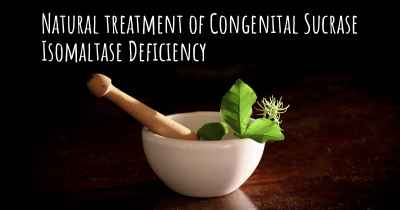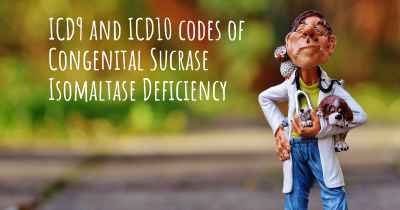Congenital Sucrase Isomaltase Deficiency diet. Is there a diet which improves the quality of life of people with Congenital Sucrase Isomaltase Deficiency?
Are you aware of a diet that can improve the quality of life of people with Congenital Sucrase Isomaltase Deficiency? Is there a diet that is suggested to avoid when having Congenital Sucrase Isomaltase Deficiency? See if there is a diet that can improve the quality of life of people with Congenital Sucrase Isomaltase Deficiency, recommended and to avoid food when having Congenital Sucrase Isomaltase Deficiency

Congenital Sucrase Isomaltase Deficiency Diet
Congenital Sucrase Isomaltase Deficiency (CSID) is a rare genetic disorder that affects the ability to digest certain sugars, such as sucrose and maltose. Individuals with CSID have a deficiency or absence of the enzyme sucrase-isomaltase, which is responsible for breaking down these sugars in the small intestine. As a result, they may experience symptoms like abdominal pain, bloating, diarrhea, and malnutrition.
While there is no cure for CSID, managing the condition through a specialized diet can significantly improve the quality of life for individuals with this disorder. The primary goal of the CSID diet is to reduce the intake of sucrose and maltose, while ensuring adequate nutrition and preventing symptoms.
Key Dietary Recommendations
1. Limit Sucrose and Maltose: Since individuals with CSID have difficulty digesting sucrose and maltose, it is important to minimize their intake. Foods high in sucrose include table sugar, honey, maple syrup, and some fruits. Maltose is commonly found in barley, malted drinks, and some processed foods. Reading food labels carefully and avoiding products with added sugars is crucial.
2. Choose Alternative Sweeteners: While sucrose should be avoided, there are alternative sweeteners that can be used in moderation. These include glucose, fructose, and artificial sweeteners like aspartame or stevia. However, it is important to consult with a healthcare professional or registered dietitian to determine the most suitable options.
3. Focus on Complex Carbohydrates: Complex carbohydrates, such as whole grains, legumes, and starchy vegetables, should form the basis of the CSID diet. These foods provide essential nutrients, fiber, and energy without exacerbating symptoms. Examples include brown rice, quinoa, lentils, sweet potatoes, and oats.
4. Ensure Adequate Protein: Protein is essential for growth, repair, and overall health. Including lean sources of protein in the diet, such as poultry, fish, tofu, eggs, and dairy products (if tolerated), can help meet the body's needs. Plant-based protein sources like beans, lentils, and nuts can also be included.
5. Opt for Lactose-Free Dairy: Many individuals with CSID also have difficulty digesting lactose, the sugar found in milk and dairy products. Choosing lactose-free or low-lactose alternatives, such as lactose-free milk, yogurt, and cheese, can help prevent digestive symptoms while still providing important nutrients like calcium and vitamin D.
6. Consider Enzyme Supplements: In some cases, healthcare professionals may recommend enzyme supplements to aid digestion. These supplements contain sucrase and isomaltase enzymes, which can help break down sucrose and maltose. However, their effectiveness may vary, and it is important to follow the guidance of a healthcare professional.
Meal and Snack Ideas
Here are some meal and snack ideas that can be incorporated into a CSID-friendly diet:
- Breakfast: Oatmeal made with water or lactose-free milk, topped with fresh fruits and a drizzle of honey substitute.
- Lunch: Grilled chicken breast with quinoa and steamed vegetables.
- Snack: Carrot sticks with hummus or a handful of mixed nuts.
- Dinner: Baked salmon with brown rice and roasted sweet potatoes.
- Snack: Greek yogurt (lactose-free if needed) with berries.
Remember to tailor the diet to individual preferences and consult with a healthcare professional or registered dietitian for personalized advice.
Conclusion
While living with Congenital Sucrase Isomaltase Deficiency can present challenges, following a carefully planned diet can greatly improve the quality of life for individuals with this condition. By limiting the intake of sucrose and maltose, choosing alternative sweeteners, focusing on complex carbohydrates and adequate protein, and considering lactose-free options, individuals with CSID can manage their symptoms and maintain optimal nutrition. It is important to work closely with healthcare professionals and registered dietitians to develop a personalized CSID diet plan that meets individual needs and preferences.
Posted Mar 8, 2019 by Simone 3215
Posted Nov 15, 2021 by Tracey 3000








